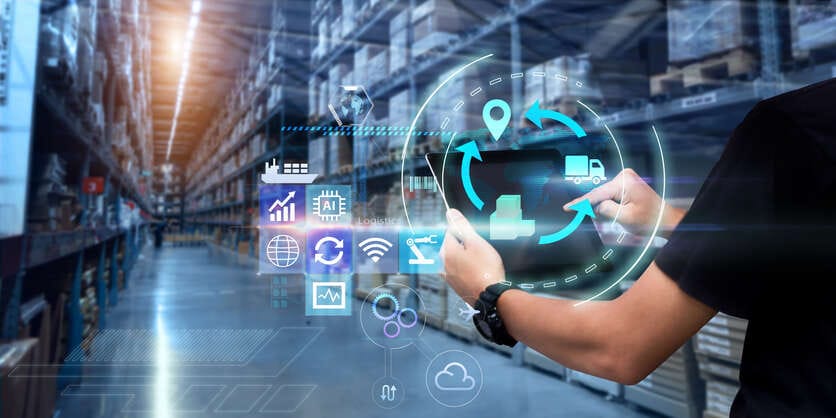
How can RTLS benefit logistics and warehouses?
Do you still depend on the artificial statistics of commodities, assets, and people? Are you feeling labour-consuming and time-consuming but have no idea about making improvements? After discussing with many customers, Blueiot concludes two significant difficulties of warehousing and logistics:
- Lack of scientific and effective staff management
- Artificial statistics may cause low efficiency and human error.
- It is challenging to optimize the picking process through valid data.
- System cannot see the real-time data.
- Lack of powerful and automated asset inventory technology
- Lack of real-time data about assets and resources in the warehouse, such as output in storage management, location and status.
- Statistics of out-put and in-put of the warehouse cannot be automatically generated, so it has to be calculated artificially, which leads to a high rate of mistakes.
- It is difficult and time-consuming to pick an order.
A real-time locating system (RTLS) may help you make progress in this dilemma through the real-time location of assets and staff.
What is RTLS?
As the name implies, real-time locating systems (RTLS), also known as real-time tracking systems, track objects or people in real-time within an enclosed area, usually within a building, a warehouse, a hospital, etc. A fixed reference point (usually a device called an anchor) receives wireless signals from RTLS transmitters (usually called tags) to calculate their location by attaching them to objects or wearing them on people. Although most RTLS tags tend to be connected to objects or worn on people, one of the most commonly used RTLS technology, Bluetooth Low Energy (BLE), has the ability to use any devices with Bluetooth, such as smartphones, watches, etc., rather than extra tags. Therefore, this article will illustrate an RTLS solution based on BLE Angle of Arrival (AoA) RTLS technology.
To complete an integrated logistics and warehouse RTLS solution, wireless tags and anchors are the underlying hardware that supports the upper software. The calculation engine collects raw position data and analyzes them into precise position coordinates, and the application layer displays various functions for customers.
How can RTLS benefit logistics and warehouse?
According to the feedback of Blueiot’s customers, Blueiot RTLS has played a crucial role in three aspects: simplifying operations, increasing profits, digitization and automation. Many practical functions have been explored for intelligent warehouses and logistics.
Improving warehouse efficiency
- Long search time
Many warehouses face the problem of spending much time looking for objects. For example, it is not easy to find needed assets among a large amount of various assets. Asset loss caused by inappropriate asset management prolongs the search time and even increases unnecessary costs. Further, forklifts often get lost between pallets, which slows down the processing of orders. All these solvable circumstances delay delivery and raise costs.
Once equipped with Blueiot RTLS tags, the BlueIOT Positioning Application Software Platform will provide high-precision real-time position of assets so that staff can find the most proper assets in several seconds. Besides, the number of available equipment and its information and whether the asset is available are easily acquired.
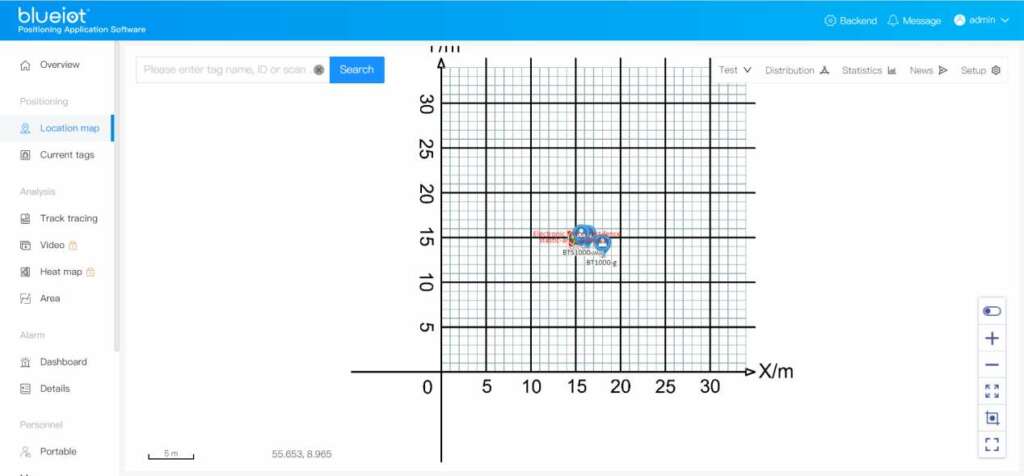
- Disorganized or overloaded routes
warehouses are usually divided into several areas performing different functions, which makes it troublesome to find the right way or leads to overloaded transport due to too many orders and disorganized routes. For staff who need to process orders or maneuver equipment, a well-regulated route saves a lot of time and effort.
BlueIOT Positioning Engine supports path planning and navigation in warehouses and logistics.
- Inefficient workflow
It is time-consuming and labour-consuming to find and identify assigned orders in the manual order-picking process, which is likely to cause human error and decrease customer satisfaction.
Blueiot AoA Positioning System provides many functions to improve workflow and the speed of order picking. A location map is a basic function to find the forklift, pallets, and products. Area statistics function, displaying the number, categories, status, in and out time, and duration of stay of assets and staff, reasonably manages workflow and picking process, which can avoid traffic overload and generate regional reports for further optimization. Camera linkage can track the location of a particular order (through positioning related devices or staff) in real-time and make timely adjustments.
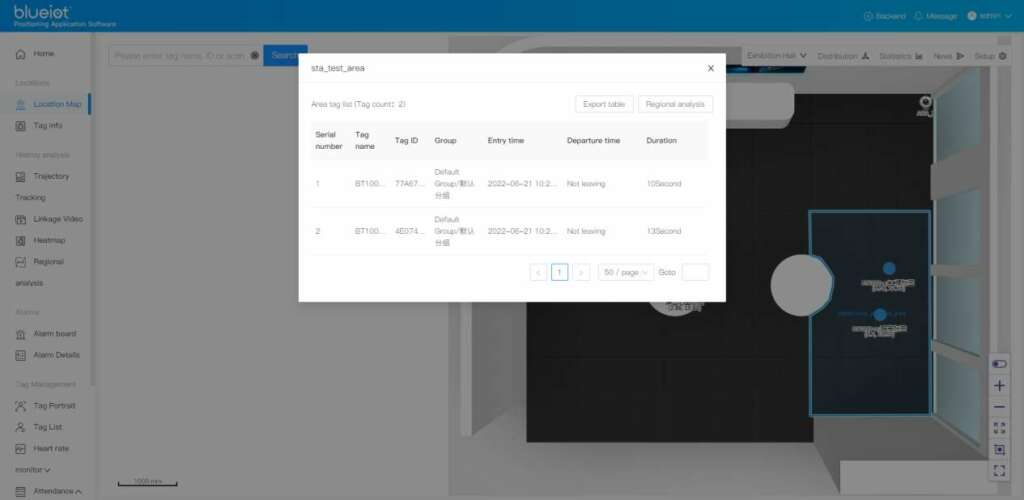
- Underutilized equipment
Various categories and huge amounts of devices and equipment are critical in warehouse and logistics, which is closely linked to labor productivity and order efficiency. Lack of efficient equipment management may bring back problems that could have been avoided, like a decrease in order efficiency caused by downtime of equipment and unnecessary maintenance costs.
To help customers avoid this condition, Blueiot develops several features that apply to different stages of asset management. Firstly, based on the real-time location of equipment, BlueIOT Positioning System can display the real-time status of equipment in three modes, including online, offline, and dormant, warn in low battery and link with the security camera system for real-time image. Secondly, except for real-time data, BlueIOT Positioning System provides historical data for analysis of equipment and operation through recording the real-time location. For example, staff can track the trajectory and usage time of equipment and trips for unloading and loading products to analyze the usage of equipment, optimizing operations and reducing downtime.
- Asset lost
BlueIOT Positioning System protects equipment and devices that are easily lost by assigning a geo fence. That once the device is taken away the geo fence, the system will alarm.
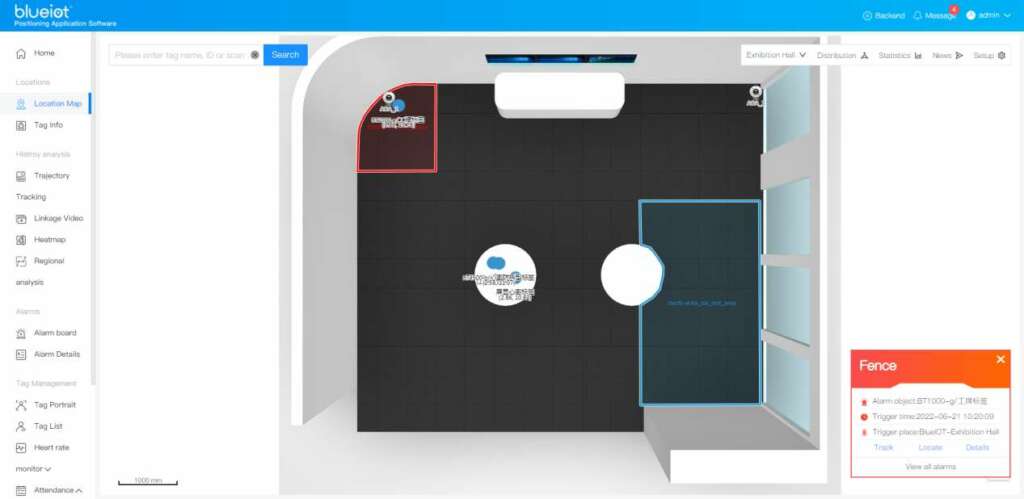
Keeping staff safe
- Accidents to misleading routes
In processing orders, staff has to deeply engage in dealing with equipment and objects since misleading routes may bring huge risks to staff. Therefore, Blueiot designs some valued functions for protecting staff.
Basically, BlueIOT Positioning Application Software Platform updates the real-time location of staff so that security personnel can find the staff who is in trouble in time. And Blueiot’s system will alarm when staff vital signs like heart rate are abnormal. Besides, Bluetooth-enabled terminals can be additionally included in the system to detect vital signs of staff.
- Chaotic evacuation
In the warehouse, it is impossible for people to find the incidents in time, so they don’t have enough time to evacuate.
With the BlueIOT Positioning Application Software Platform, you can send notifications to all terminals and inform them of the proper evacuation routes and exits.
Accordingly, staff can push the SOS button crying for help.
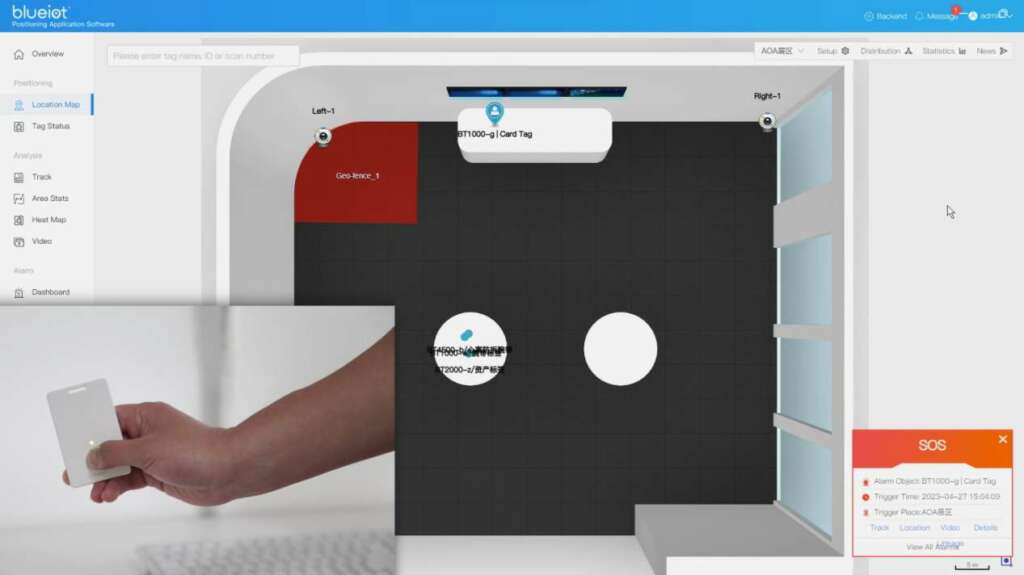
- LOCALSAFE® System
LOCALSAFE® Forklift Proximity Warning and Pedestrian Detection System is A patent system used for preventing collisions between different forklifts, and forklifts and pedestrians, and crossroad scenarios.
- Staff management
In addition to ensuring staff safety, BlueIOT Positioning Application Software Platform contains staff management functions, including attendance checks and profile display. Meanwhile, managerial staff can check whether the staff is in the proper zone and prevent staff from entering unauthorized areas.
Blueiot RTLS Solution for Warehousing and Logistics not only pays attention to real-time location data but also hopes to make further analysis of all the data, which can help enterprises achieve Industry 4.0 better in all aspects. Open ecosystem of BlueIOT Positioning System provides more potential for warehouses and logistics to develop their specific functions.


